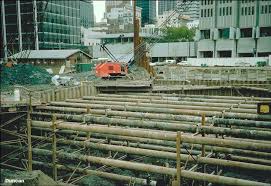Nov . 11, 2024 07:40 Back to list
slip form formwork manufacturer
Understanding Slip Form Formwork A Comprehensive Overview for Manufacturers
Slip form formwork is a cutting-edge construction technique that plays a pivotal role in modern building projects, particularly in the construction of tall structures like skyscrapers, bridges, and silos. This method provides significant advantages in terms of efficiency, quality, and cost-effectiveness, making it a preferred choice for many contractors and builders. In this article, we will explore the intricacies of slip form formwork, its manufacturing process, benefits, and the factors to consider for manufacturers offering this innovative solution.
What is Slip Form Formwork?
Slip form formwork is a movable formwork system that allows concrete to be poured continuously while the formwork itself rises or slips upwards. This technique is especially effective for vertical structures and is characterized by its ability to create seamless and uniform concrete surfaces. The process involves constructing a set of forms that are designed to support the concrete as it sets, and these forms are elevated at a constant rate as the concrete is poured, enabling continuous casting.
Manufacturing Process
The manufacturing of slip form formwork involves several critical stages
1. Design and Engineering The initial step involves designing the formwork system, which requires extensive knowledge of structural engineering and materials. The design must account for the weight of the concrete, forces from wind and seismic activity, and the rate of ascent.
2. Material Selection Manufacturers must choose materials that are not only strong and durable but also lightweight for easy handling. Common materials include high-strength steel and engineered plywood, which can withstand the pressures of freshly poured concrete.
3. Fabrication The fabrication process involves cutting, welding, and assembling the chosen materials into the desired formwork shape. Precision in this stage is crucial, as even minor inaccuracies can lead to significant structural issues.
4. Quality Control Ensuring quality during manufacturing is essential. This includes rigorous testing of materials, checking for flaws, and ensuring compliance with safety and building codes.
5. Assembly and Testing Before deployment on a construction site, the slip form system should be assembled and tested under controlled conditions to verify its performance and safety.
Benefits of Slip Form Formwork
Manufacturers and builders alike recognize several benefits associated with the use of slip form formwork
slip form formwork manufacturer

- Speed The continuous pouring process reduces construction time significantly compared to traditional formwork methods, which often require extensive setup and breakdown procedures.
- Cost-Effectiveness While initial costs may be higher due to the complexity of design and materials, the reduced labor costs and time savings can lead to overall lower project expenses.
- Quality Finish Slip form systems allow for smoother and more uniform concrete surfaces, reducing the need for additional finishing work and maintaining aesthetic appeal.
- Versatility This method can be adapted for various structures, including vertical columns, walls, and circular forms, making it suitable for a wide range of applications.
Considerations for Manufacturers
For manufacturers looking to offer slip form formwork solutions, there are several key considerations
- Innovation and Technology Staying updated with advancements in materials and engineering techniques will enable manufacturers to improve their products and remain competitive.
- Customization Providing customized solutions based on specific project requirements can enhance customer satisfaction.
- Training and Support Offering training for contractors and builders on the proper use and maintenance of slip form systems is crucial for ensuring efficiency and safety on job sites.
- Sustainability As the construction industry moves towards sustainability, incorporating eco-friendly materials and practices into the production of slip form systems can appeal to environmentally conscious clients.
Conclusion
Slip form formwork represents a remarkable advance in construction techniques, offering speed, efficiency, and superior finish quality for vertical structures. Manufacturers who understand the intricacies of this method and invest in innovative designs and materials will be well-positioned to thrive in a competitive market. By focusing on quality, customization, and sustainability, manufacturers can provide valuable solutions that meet the evolving needs of the construction industry. As we look to the future, slip form formwork will undoubtedly continue to play a crucial role in shaping our urban landscapes.
-
High-Quality U Head Jack Scaffolding – Reliable Scaffolding Jack Head Manufacturer & Factory
NewsJul.08,2025
-
High-Quality I Beam H20 Leading Timber Beam H20 Material Factory, Exporters & Manufacturers
NewsJul.08,2025
-
High-Quality Powder Coating Steel Formwork - Durable & Corrosion Resistant Solutions
NewsJul.07,2025
-
Inclined Column Formwork Supplier – Durable & Precise Solutions for Unique Structures
NewsJul.07,2025
-
High-Quality Water Stop Solutions Trusted Water Stop Company & Suppliers
NewsJul.07,2025
-
High-Quality Formwork Material Supplier Reliable Manufacturer & Factory Solutions
NewsJul.06,2025